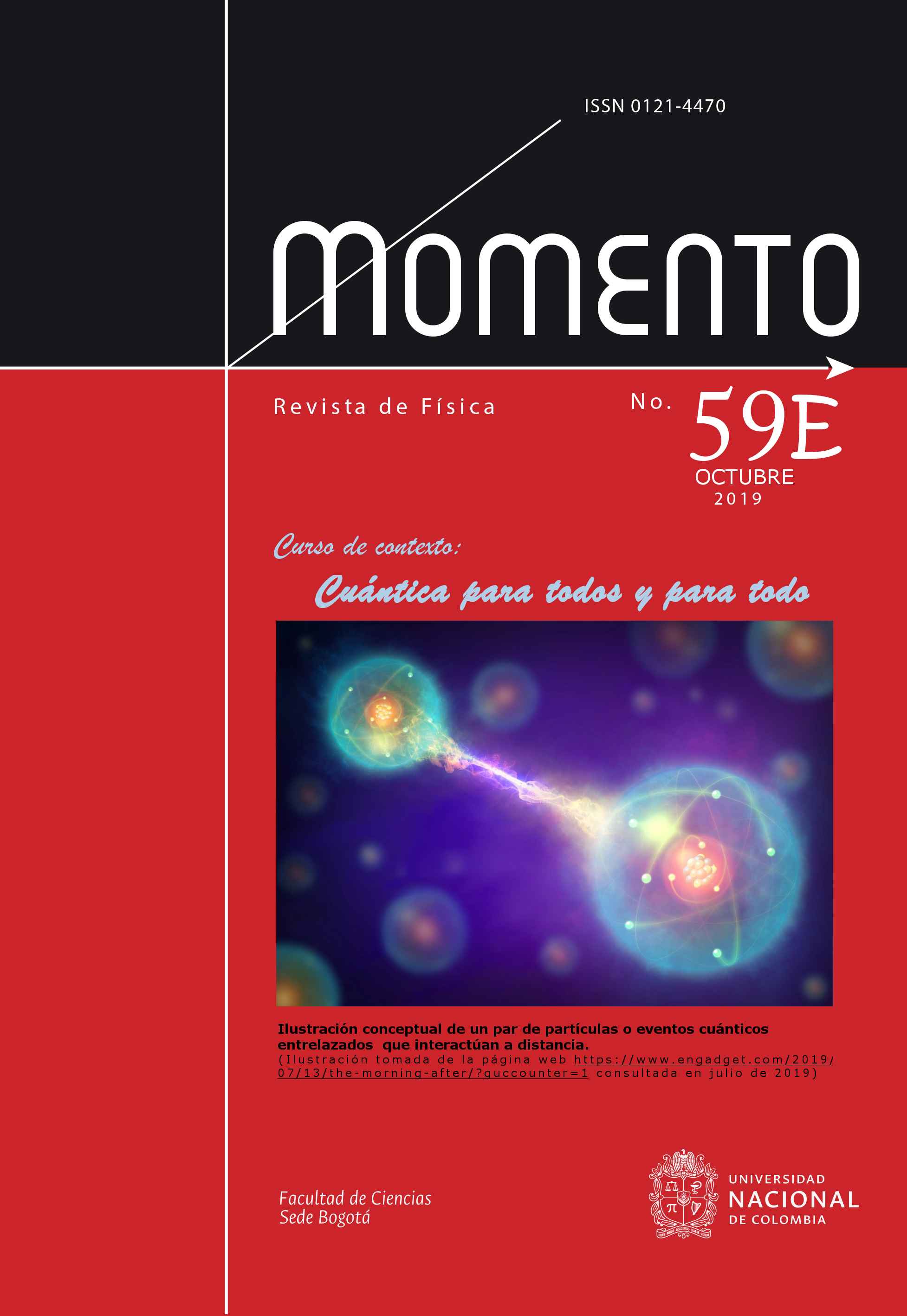UNOS CUANTOS PARA TODO
QUANTA FOR EVERYTHING
DOI:
https://doi.org/10.15446/mo.n59E.81665Keywords:
Mecánica cuántica, divulgación científica. (es)Quantum physics, scientic popularization. (en)
Downloads
La física cuántica puede aplicarse en principio a todo tipo de situaciones, pero los efectos cuánticos más protuberantes solo se observan en condiciones muy especiales y las matemáticas que los describen se consideran complicadas. El curso de contexto Cuántica para todos y para todo es un curso que se ofrece a estudiantes de todas las carreras de la Universidad Nacional - Sede Bogotá. Como su nombre lo indica, no exige matemáticas, tampoco conocimientos previos de física. Con este artículo se quieren presentar las ideas centrales que dieron lugar a la física cuántica y el estado actual de la teoría, introduciendo al lector al tema sin recurrir al lenguaje matemático que es propio de la física. Haremos un resumen de los principios cuánticos fundamentales y de sus aplicaciones más importantes.
Quantum physics can be applied in principle to all kind
of situations; but the most remarkable quantum effects
are only visible under very special conditions and the
mathematics that describes them are considered very
cumbersome. The context course Quanta for everybody
applied to everything is a basic course offered for all
undergraduate programs at Universidad Nacional - Sede Bogotá. As its name suggests, there is not any mathematics required nor previous knowledge on physics. This article is intended to present the central ideas that gave rise to quantum physics and the actual state of the theory, introducing the reader to the topic without resort to the mathematical language that is used in the discipline. A review of the fundamental quantum principles and of its most important achievements is presented.
References
E. Klein, La Física Cuántica (2003).
J. Giraldo, Unos cuantos para todo (2009).
J. Giraldo, Quantum Sapiens I (2019).
J. Giraldo, Quantum Sapiens II .
A. Hobson, Tales of the Quantum: Understanding Physics'
Most Fundamental Theory. (2010).
D. Grandy, Everyday quantum reality (2017).
A. Rae, Quantum physics (2011).
O. Chad, How to Teach Quantum Physics to Your Dog (2010).
J. Giraldo, Quantum Sapiens I (2019).
J. Gribbin, The quantum mystery (2015).
R. Feynman, The Feynman Lectures on Physics., Vol. 1 (1963).
J. Claus, Zeitschrift fur Physik 161 (1961).
J. Sakurai, Modern quantum mechanics. (1994).
J. Giraldo, ¿De qué se trata la mecánica cuántica?. (2018).
Wikipedia, "Mach - zehnder interferometer," (2019).
Wikipedia, "Quantum tunnelling," (2019).
Wikipedia, "Heisenberg's microscope," (2019).
E. Britannica, "Quantum mechanics," (2019).
Tamiz, "Cuántica sin fórmulas," (2009).
M. Van Biezen, "Particle physics (17 of 41) what is a photon?"
(2015).
CuriosaMente, "¿qué es la mecánica cuántica?" (2017).
T. Munsen, "Física cuántica, explicación muy didáctica,"
(2013).
R. Beach, "Historía de la física cuántica tienes que ver este
documental by mv technologies 30," (2017).
edX, "The quantum world | harvardx on edx," (2017).
P. S. Time, "Quantum entanglement and the great
bohr-einstein debate - space time - pbs digital studios,"
(2016).
F. Laloe, "¿do we really understand quantum mechanics?"
(2013).
L. Smolin, Einstein's unnished revolucion. (2019).
How to Cite
APA
ACM
ACS
ABNT
Chicago
Harvard
IEEE
MLA
Turabian
Vancouver
Download Citation
License
Copyright (c) 2019 MOMENTO

This work is licensed under a Creative Commons Attribution-NoDerivatives 4.0 International License.
Those authors who have publications with this journal, accept the following terms:
a. The authors will retain their copyright and will guarantee the publication of the first publication of their work, which will be subject to the Attribution-SinDerivar 4.0 International Creative Commons Attribution License that permits redistribution, commercial or non-commercial, As long as the Work circulates intact and unchanged, where it indicates its author and its first publication in this magazine.
b. Authors are encouraged to disseminate their work through the Internet (eg in institutional telematic files or on their website) before and during the sending process, which can produce interesting exchanges and increase appointments of the published work.




















